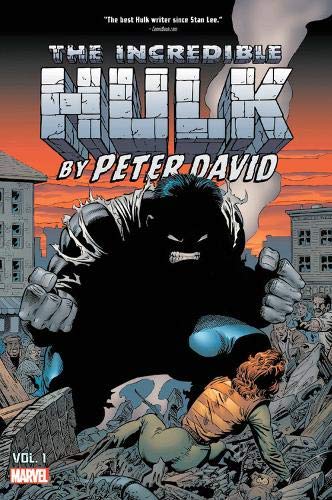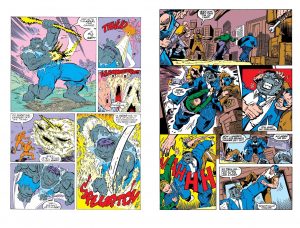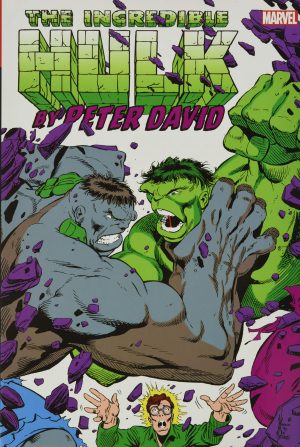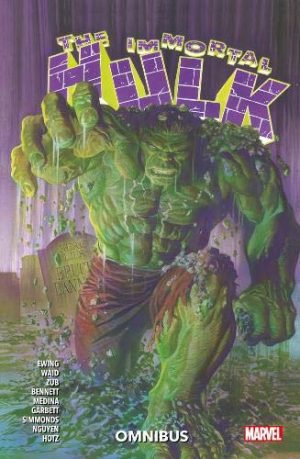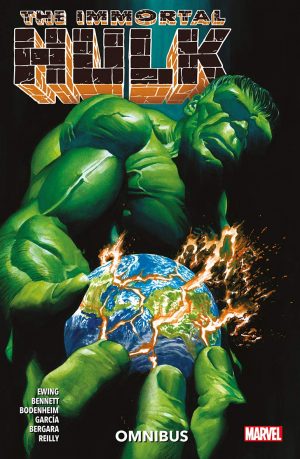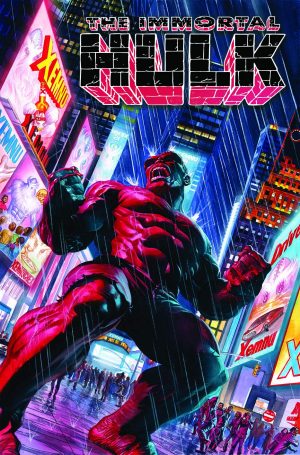Review by Karl Verhoven
Anyone wanting to complete Peter David’s extensive Hulk run in a single book format is constantly being challenged by Marvel. They first issued eight volumes of the Visionaries series, then called a halt. The run was continued from the Visionaries stopping point in the thicker (and more expensive) Epic Collections. However, the once annual publication schedule of the Epic Collections has slowed right down, and in the meantime Marvel have started from the beginning again punting out four Omnibus volumes in just over two years, at last collecting David’s entire twelve year run. A fifth is planned mopping up odds and ends and a brief return.
The even more expensive Omnibus format is the gold standard, being hardback editions with oversized pages presenting the work of a good selection of artists as well as it’s going to be seen. David redefined the Hulk, taking what many in 1987 considered a tired idea that had run its course, and injected constant change and innovation, a feature of the series and character ever since. He reconciled the Hulk in effect having several identities beyond Bruce Banner over an already long run, and added more, simultaneously sweeping away the idea that because the Hulk was a dim monster the supporting cast had to carry the strip. Not that David neglected them either. There are several sets over the entire run, and all are interesting. In short David’s Hulk showed what could be done with imagination, and for much of the 1990s there was nothing to challenge it as the most entertaining and creative title Marvel published. So how does it read now?
David plays fair by readers who’d been enjoying the title before he took over, clearing up those plots, and despite some early stumbles, he settles in very quickly. He’s helped by having Todd McFarlane already on the series (sample art left), about to develop his signature style. McFarlane never learned how to tell a story effectively, but those individual panels sure looked good. It’s around a year before the pair really gel, though, David having determined where he wants the series to go, and McFarlane really pulling out all the stops for his four chapter finale.
This selection embraces almost all the content from the first four Marvel Visionaries paperbacks, so continues well beyond McFarlane’s contribution, after which it flounders considerably. The Hulk is first missing, then takes a journey to a microscopic world. When he re-emerges on Earth it’s as a shorter, blockier Las Vegas enforcer. “Hello, I’m Mr. Fixit”, he announces to a group of gunmen, “and you need repairs”. This period is interesting in principle, but terribly inconsistent, with only a few really good moments, and the stretched people with misproportioned heads drawn by Jeff Purves (sample right) pleased few at the time, and haven’t dated well. Marie Severin inking his later work tidies up a lot.
David never lacks for clever ideas, but on this selection, his first full time series writing, he doesn’t always treat them as well as he might. He pushed superhero comics forward, but the result is that they’ve left his earliest work behind. Vol. 2 reads far better.
